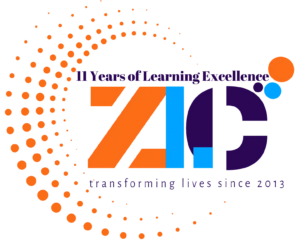
An aging workforce is always a major concern for employers. Business owners today face a volatile market where customer preferences change at the speed of light and tech innovations are a dime, a dozen. Employers need driven and enthusiastic employees who can adjust quickly to any changes and are eager to upgrade their skill set to keep up with organizational goals.
In general, a young workforce (below the age of 40) is more willing to go that extra mile and adapt to the ‘learn or perish ‘culture many organizations are embracing today. The older employees may be a tad bit slower (not to mention hesitant) to jump on the up-skilling bandwagon. However, letting go of them is not the answer.
The demand for young go-getter employees may be at an all-time high. But the supply maybe a little bit too low for comfort. According to a 2021 survey conducted by the Centre for Monitoring Indian Economy more than 60% of the Indian workforce are above 40 years of age. Higher job losses among the younger workers have led to a deficit of young talent.
When it comes to elderly employees, questions of productivity are controversial as well as a sensitive issue. The general consensus according to macroeconomics studies is that an aging population has a negative impact on labor productivity. There also tends to be a negative bias against the abilities and performance potential of elder workers at least when it comes to things such as adjusting to tech/digital transformations and adapting to organizational changes.
However, it won’t do to blindside the elderly worker when it comes to upskilling. Training the seniors can yield several benefits (besides the increase in productivity).
It keeps employees on top-form
The longer a person has worked at an organization the more likely are they to end up as just another cog in the machine. As the years go by and employees get more familiarized with the ins and outs of their job role, they may get more efficient at their work, but at the same time, a feeling of complacency also creeps in. As a result, many senior workers go about their job almost mechanically, with little to no zeal to improve or upgrade themselves.
Training opportunities might be just what’s needed to infuse them with the right amount of enthusiasm and give them an opportunity to improve.
Training May Give Them a Sense of Purpose
Older employees may often struggle with a sense of monotony. Giving them training opportunities gives them the opportunity to move on to new duties/responsibilities, moreover, it assures them that the employer is invested in their professional development and has not forgotten them.
Senior Employees May be Indispensable in Mentoring Young Employees
Elderly workers are a treasure trove of experience and knowledge they have accumulated over the years. An age-inclusive training culture may give them the opportunity to mentor younger employees.
The Challenge of Training Older Workers
Psychological Biases against Training
For various reasons, older employees may not always be very enthusiastic about training programs. They may view training not as an opportunity to grow professionally but as some form of punishment or proof that they are not performing well. Learning and Development initiatives were not prevalent when these workers began their careers and training was seen as something for underperformers.
Lack of Pertinent Qualifications
Older workers may not always have the accreditation necessary for taking on new roles which bring in new training opportunities. They are less likely to hold formal qualifications like a degree than their younger counterparts.
How to Train Your Older Workforce?
Present Training Courses as Advanced Degrees
Senior employees often pride themselves on their current skill-set and work ethic, so they may not always feel the need for training, especially if they see it as a re-skilling endeavor. In such cases, advanced training courses crafted for senior executives maybe what might just tempt them to try out training. Don’t make your elderly employees feel as if they are being asked to train on something they already know. Give them a genuine opportunity to develop new skills.
Aim for an inclusive learning culture
When working with a multigenerational workforce, it’s best if we work against being ageist. Avoid making decisions about employee training and professional advancements based on stereotypes about the employee’s age. Don’t assume that someone would not be interested in upskilling opportunities based on their age. Be careful of coming across as ageist when you are communicating with the workforce.
Arrange Training as per Various Learning Styles
Remember not everybody has a similar learning style or speed. While elder employees may process information at a slower pace they may be able to contextualize the information more easily based on their decades of experience. They also retain knowledge more.
Younger employees absorb information quicker. This makes them indispensable for short-term projects where a quick application of information is needed. If you have a multigenerational workforce then L&D programs should cater to their individual learning styles and requirements. That’s the only way employers can get the best out of the training program and keep workers of all ages engaged in their training.
Elder Employees Can Be a Valuable Source of Soft Skills
Engaging seniors yields a huge benefit. You can eventually collaborate with the elderly employees and provide soft skills training to younger workers easily. Skills like leadership, communication, teamwork, etc are gathered and mastered over a lifetime. Elderly employees can thus be great soft-skill instructors for their younger colleagues.

